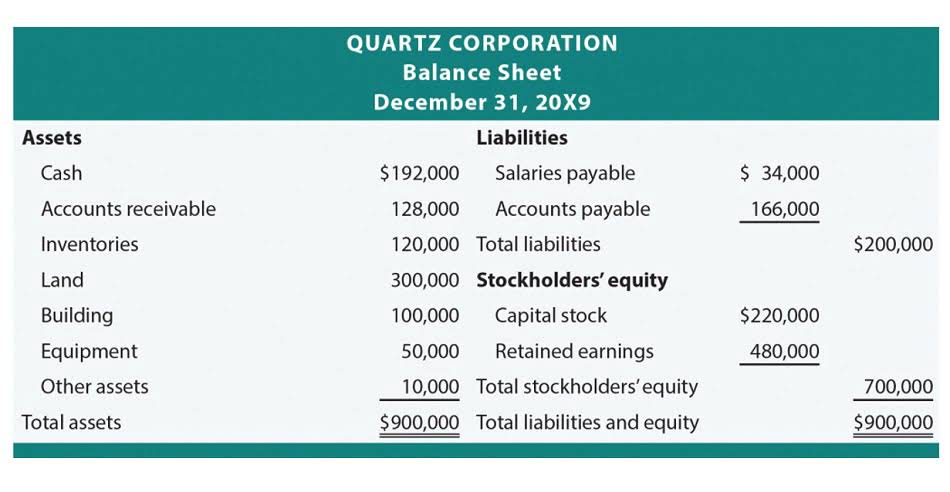CHI TIẾT SẢN PHẨM
Case studies from various industries offer a window into the practical applications of post-closing trial balances. These real-world examples not only demonstrate the process but also highlight the unique challenges and solutions encountered by different entities. By systematically addressing each of these areas, ledger account discrepancies in the trial balance can be identified and corrected. It’s important to approach this troubleshooting process methodically, as rushing through it can lead to overlooking the root cause of the imbalance. Remember, the accuracy of the trial balance is foundational to the integrity of the entire financial reporting process.
Contents
The adjusted trial balance snapshot:
These are known as permanent accounts, representing the ongoing financial position of the business. Permanent accounts include all asset accounts, such as Cash, Accounts Receivable, and Equipment. By following these steps, accountants ensure that the books are accurate and ready for the new accounting period, providing a clean slate for the company’s ongoing financial journey. This meticulous process is foundational for the integrity of financial reporting and is essential for strategic decision-making in the subsequent period. NYSE and NASDAQ-listed companies must follow strict financial reporting rules.
How are closing entries posted in the general ledger?
- You record accounting entries in accordance with the Generally Accepted Accounting Principles (GAAP).
- Regular review at this stage can help prevent costly mistakes down the line.
- For auditors, the ability to track changes and access audit trails within these tools is invaluable, providing transparency and accountability for every figure on the balance sheet.
- The post-closing trial balance is the summary of all permanent journal accounts with non-zero balances at the end of an accounting period.
The final step is to verify that the sum of all debit balances equals the sum of all credit balances. This equality confirms the accounting equation remains in balance and that the closing process was completed without mathematical errors. The post-closing trial balance confirms the general ledger’s balance after the accounting period’s closing entries have been posted. It verifies that only permanent accounts carry balances forward, ensuring that the books are ready for the upcoming accounting cycle. This report acts as a final checkpoint, confirming the accuracy of the closing entries and the overall integrity of the ledger. The accounting cycle, a fundamental process for businesses, culminates in several crucial steps, including the creation of a post closing trial balance.
Accounts That Are Excluded
- With a clear understanding of its purpose, our next step is to specifically identify these permanent accounts that form the very foundation of this critical balance.
- In this example, the total debits equal the total credits, indicating that the ledger is balanced and the post-closing trial balance is accurate.
- So, your financial transactions are recorded accurately in the general ledger accounts if the debit column of your equates to its credit column.
- As part of the closing process, the balances in these movements to the retained earnings account.
- However, you might wonder, where are the revenue, expense, and dividend accounts?
- For the past 52 years, Harold Averkamp (CPA, MBA) hasworked as an accounting supervisor, manager, consultant, university instructor, and innovator in teaching accounting online.
- It is prepared after all closing entries have been made and posted to the ledger accounts.
This is because it not only helps in determining the final position of various accounts. Further, you need to prepare basic financial statements like the income statement and balance once the accounts are tallied in the trial balance sheet. A post-closing trial balance is a report that lists the balances of all the accounts in a company’s general ledger after the closing entries have been posted. Totals of both the debit and credit columns will be calculated at the bottom end of the post-closing trial balance. These columns should balance, otherwise, it would likely mean that there has been an error in posting of the adjusting entries.
Related AccountingTools Courses
For instance, consider a scenario where an accounting team is working gym bookkeeping on the post-closing trial balance for a multinational corporation. Using a cloud-based accounting system, they can pull data from various subsidiaries in real-time, ensuring that the trial balance reflects the most current financial information. The system automatically adjusts for currency conversions and intercompany transactions, which are often sources of discrepancies.
Step-by-Step Guide to Preparing a Post-Closing Trial Balance
The post-closing trial balance confirms their reports are correct, meeting SEC and FASB standards. It’s crucial for maintaining trustworthy financial statements and meeting regulatory and investor expectations. Trial Balance is a statement that helps you to verify the accuracy of post-closing trial balance example your ledger accounts.









Bình luận